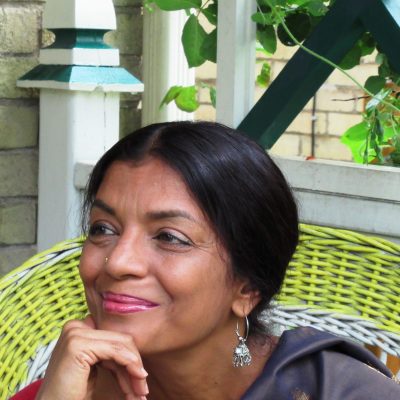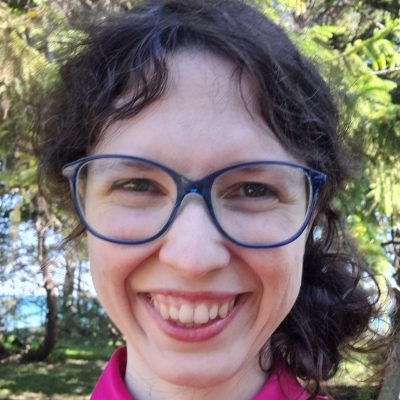Appendix: Call for Papers for Thinking About Writing: An Open Educational Textbook for Multilingual International Students in First-Year University Writing Courses
Srividya Natarajan and Emily Pez
Working title: Thinking About Writing
Editors: Dr. Srividya Natarajan and Dr. Emily Pez
Open Educational Publishing and Copyright
The textbook will be published as an Open Educational Resource, so that it is freely available for teachers and learners to access and distribute. We would like to acknowledge the contributions of Emily Carlisle, Research and Scholarly Communication Librarian at Western Libraries (Western University, London, ON). She supported this CFP in many ways; we are especially grateful to her for providing wording around open access and copyright issues.
The textbook, and each chapter, will be published under a Creative Commons Attribution-NonCommercial 4.0 International license. Under this license, users will be able to share and adapt the resource for non-commercial purposes, as long as proper attribution is given. Authors will retain all copyright to their contributions, so that they are free to post, share, and repurpose their work as they wish. Authors whose articles are accepted will be asked to sign a form to signal that they understand these copyright and licensing terms.
Because the resource is freely available and will generate no revenue, authors will receive no compensation for articles that they contribute to the textbook.
Context, Purpose, and Contents
Like many other post-secondary institutions in Canada and the USA, our university recruits international students from many countries, with the majority coming from China, South Korea, and South Asian countries including India and Pakistan. Multilingual international students at our institution are invited to take a Year 1 Writing course designed to help them acquire the academic literacies they need for success in their new educational context. Unable to find a textbook for them with the features we wanted, we wrote a handful of articles and collected them into an online resource. This material forms the core of the expanded Year 1 Writing textbook we are hoping to publish for a broader audience.
This call is for 800-1000-word articles and readings that can become textbook content, covering specific themes, and adopting specific philosophical and pedagogic approaches, as follows:
Ideological Frameworks:
We are interested in articles/readings that are grounded in:
- Critical race theory
- Antiracist and antilinguicist philosophies and perspectives
- New understandings of transnationalism
- Critical comparative rhetoric
- Liberatory pedagogies (we love the work of Paolo Freire, bell hooks, Gloria Ladson-Billings, Samy Alim, Suresh Canagarajah, Geneva Smitherman, Asao Inoue, and others)
- Intersectional understandings of decolonization, disability justice, 2SLGBTQIA+ justice, racial justice, class justice
These frameworks do not have to be explicitly referred to. Importantly, multilingual students should be seen through a strengths-based rather than deficit lens.
Writing Pedagogies:
We are interested in articles/readings that
- model genres that Year 1 writing students are likely to encounter and be asked to produce (the research essay, the critical reflection, the book review, the case study or analysis). Poems, flash fiction, podcast scripts, or other creative genres are also welcome (word count can be lower than 800 if needed)
- are accompanied by additional materials unpacking and contextualizing the genre, seeing it as a socially produced artefact rather than a universal template for writing
- help multilingual students build transferable skills and academic literacies that they can carry into their other courses in the social sciences and humanities (if there is expertise, we are also interested in writing in the sciences)
- adopt a writing-about-writing approach (see below for some suggested themes)
- help students develop metacognitive understandings of why they are expected to write in certain ways in this context
- create affordances for translingual pedagogies in the classroom (and de-emphasize grammar)
- create opportunities for fairer practices of evaluation and testing.
So far, the articles already written for the textbook resist deficit perceptions and labelling of L2 learners, their cultures, identities, and concerns (Martínez, 2018), question punitive approaches to inadvertent textual borrowing and patchwriting, and validate learning techniques (such as memorization and repetition) often used in some non-Western academic settings but devalued in North American classrooms. In short, the current textbook invites students to think critically about introductory writing courses.
Themes:
We are interested in articles/readings/poems that discuss, interrogate, or examine
- the politics of language, racialization, and raciolinguistic disadvantage
- learner identities, agency, and self-efficacy
- specific pedagogic relationships and practices (like plagiarism checking)
- using institutional writing centres
- students’ right to their own language (SRTOL)
- the complex relationship between Indigenous Peoples and new immigrants or international students
- publishing in undergraduate research journals
- equitable writing assessment
- the creativity, linguistic sophistication, and value of multilingual student writing
- perspectives on peer critique/review
- perspectives on collaboration (as opposed to competition).
Please feel free to email us to suggest any other themes that you want to write on! (snatara@uwo.ca).
Learning Outcomes the Textbook will Support:
The readings in the textbook are intended for use in first-year university writing courses for multilingual international students. At our institution, the learning outcomes have been defined as follows, but other outcomes are of interest to us as well:
Writing 1002 will help students to
- feel that they belong to a supportive community of learners and know how to access campus resources and supports (Toorenburgh & Gaudet, 2023);
- consider their own personal and cultural identities as a writer, and honour diverse cultural modes of communication;
- understand the kinds of reading, thinking, and writing skills needed to succeed in the Canadian university context;
- interpret an essay prompt or question, and identify or define a research problem;
- write a valid hypothesis, thesis, or argument related to a research question;
- find reliable academic sources, and read them selectively and critically;
- organize ideas in well-structured paragraphs, and connect the paragraphs to produce a coherent essay;
- integrate material from research sources through paraphrase, summary, and quotation;
- cite sources in APA style; and
- have an overall sense of how genre governs writing, and produce writing in three genres. (Adapted from Pez, 2023)
Other Important Considerations:
Readings/articles must
- be between 800 and 1000 words in length (excluding references); poems can be shorter, of course
- be conceptually complex and rich without being lexically or syntactically overwhelming (e.g., new vocabulary is good, but to be introduced in moderation)
- use an authentic academic voice (if genre-appropriate)
- cite recent scholarship in the field, but limit the list of references to around five or six items
- use APA citation style. Please see Purdue OWL for APA format: https://owl.purdue.edu/owl/research_and_citation/apa_style/apa_formatting_and_style_guide/general_format.html
- have an academic two-part title
- include (if genre-appropriate) an introduction with the following elements: a statement of context, a topic statement, definitions (if applicable), a thesis, a road map or method statement
- be formatted for accessibility, especially if using graphics or visuals. Multimodal submissions are encouraged. Please provide alt-text descriptions for all visuals and captions for all audio files.
Authors are encouraged to include relevant images or videos within the text of their submissions. If using images or videos created by others, please ensure that you have the rights to re-share them. Media published with a Creative Commons license are preferred – look for the Creative Commons license symbols, or text that says which license has been assigned to the resource. For suggestions on where to locate openly-licensed media, view the guide Open Educational Resources: Open Images, Audio & Video.
Permission must be sought from the copyright holder to include media where copyright is stated to be “All Rights Reserved.”
If you are going to be creating original images or videos that feature people, please contact snatara@uwo.ca to receive a copy of a media consent form.
Model Article:
For a model article from the current textbook, please go to the following link: https://docs.google.com/document/d/1kg2UedmZDXiW_PiitC898gPtfhsHjcRS/edit?usp=sharing&ouid=107777330223027431718&rtpof=true&sd=true
Audience
The target audience for this textbook is primarily multilingual international students in first-year university writing courses, and the instructors who teach them. Any additional work on creating exercises or coming up with classroom delivery ideas will be most welcome.
We hope the readings in this textbook will empower multilingual students to develop agency and adapt critically yet successfully to North American textual conventions without necessarily assimilating to North American cultural norms.
Contributors
We especially encourage contributions from Indigenous and racialized authors of diverse cultural and linguistic backgrounds.
We hope authors who identify as racialized, transnational, Indigenous, multilingual, or minoritized will think in terms of resolving, through their articles, the dilemma that many Writing teachers encounter in classrooms with raciolinguistically minoritized students: should the students be prepared for success as they enter their disciplinary discourse communities, or should they be validated in their sociocultural identity and their skills that span multiple languages? As we noted in a recent article (Natarajan & Pez, 2023), we could “infuse our curriculum with social justice values through affirmation of minoritized raciolinguistic identities and of resistance, on the one hand; and, on the other, we [could] continue to attend to the academic survival and success of L2 students despite the prevailing assessment ecologies within the white habitus (Inoue, 2015; Davila, 2022) of the North American university.”
Article Submission Procedure
Please email articles to Dr. Vidya Natarajan (Assistant Professor, and Coordinator, Writing, King’s University College, London, ON): snatara@uwo.ca. Please use “Article for textbook” in your subject line.
The article/reading will undergo editorial review.
The acceptance of articles will be based on how extensively the article reflects the criteria set out above. If you have questions, please contact Dr. Vidya Natarajan: snatara@uwo.ca. We look forward to reading your work!
References
Alim, H. S., Paris, D., & Wong, C. P. (2020). Culturally Sustaining Pedagogy: A critical framework for centering communities. In N. S. Nasir, C. D. Lee, R. D. Pea, & M. McKinney de Royston (Eds.), Handbook of the cultural foundations of learning (pp. 261–276). Taylor & Francis.
Canagarajah, A. S. (2002). Critical academic writing and multilingual students. University of Michigan.
Davila, B. (2022). White Language Supremacy in course descriptions. College Composition and Communication, 73(4), 640–664.
Freire, P. (2000). Pedagogy of the oppressed. 30th anniversary ed. (M. B. Ramos, Trans.). Continuum. (Original work published 1970)
hooks, b. (1994). Teaching to transgress: Education as the practice of freedom. Routledge.
Inoue, A. B. (2015). Antiracist writing assessment ecologies: Teaching and assessing writing for a socially just future. The WAC Clearinghouse. https://doi.org/10.37514/PER-B.2015.0698
Ladson-Billings, G. (2014). Culturally Relevant Pedagogy 2.0: A.k.a. the remix. Harvard Educational Review, 84(1), 74–84.
Martínez, R. A. (2018). Beyond the English Learner label: Recognizing the richness of bi/multilingual students’ linguistic repertoires. The Reading Teacher, 71(5), 515–522. https://doi.org/10.1002/trtr.1679
Natarajan, S, & Pez, E. (2023). A textbook case of antiracism: Course readings and critical pedagogy for multilingual first-year university writers [Manuscript submitted for publication]. In X. Huo & C. Smith (Eds.), Interrogating race and racism in postsecondary language classrooms. IGI Global.
Pez, E. (2023). WRIT 1002F –Introduction to Writing in English [Course outline]. King’s University College. https://www.kings.uwo.ca/kings/assets/File/outlines/2023/writ/fall/writ_1002F_651_fall_2023.pdf
Smitherman, G. (1977). Talkin and testifyin: The language of Black America. Houghton Mifflin.
Toorenburgh, L., & Gaudet, L. (2023, May 28–29). Belonging as a learning outcome: A case for Indigenous-only Writing classrooms [Conference presentation]. 2023 conference of the Canadian Association for the Study of Discourse and Writing/Association canadienne de rédactologie, York University, Toronto, ON, Canada.



